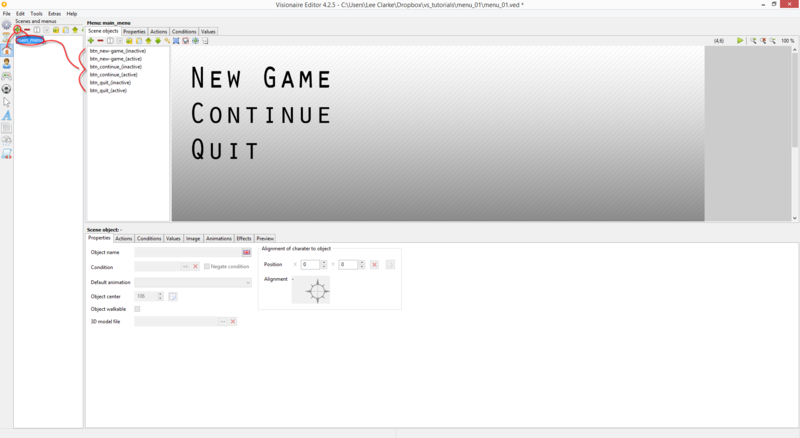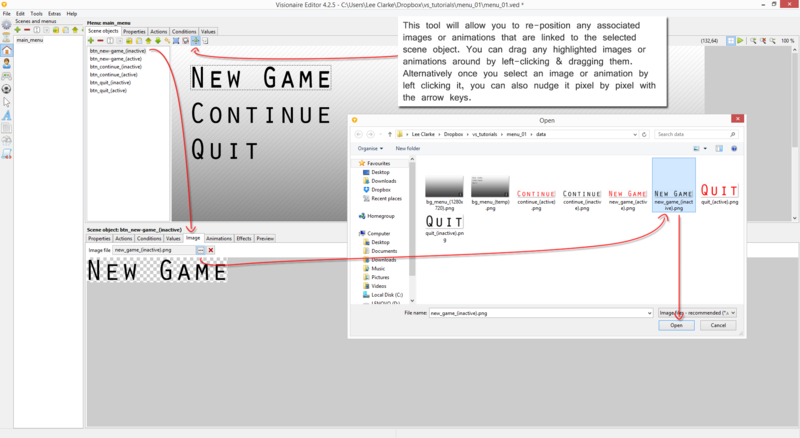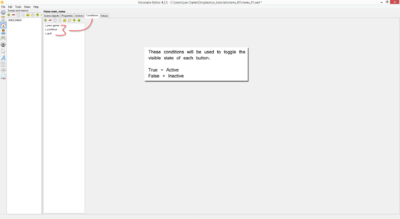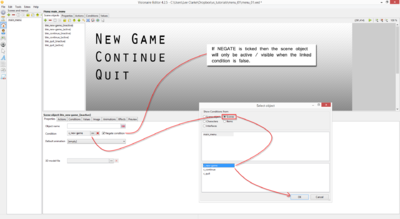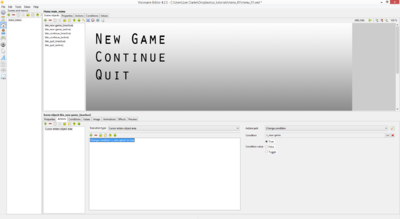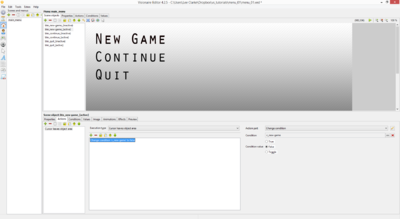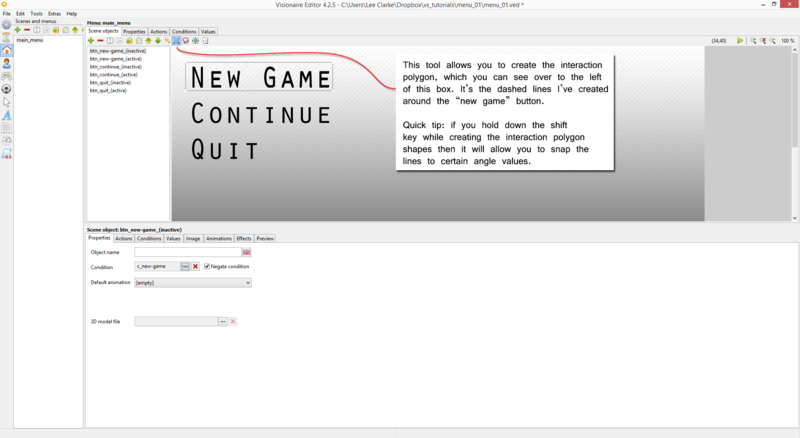Menu 101 (h2) - opacity based menu buttons
| Name | Topic | By |
|---|---|---|
| Menu_101_(b) | Opacity based menu buttons | AFRLme |
This tutorial is to show you how to create opacity based menu buttons by controlling the opacity (transparency) values of each button. This is a much neater & nicer looking solution compared to the condition based button method.
Tutorial
1. Begin by creating a new menu scene.
2. Next you want to start creating some new scene objects (2 per button. One for active state & one for inactive state). Don't forget to rename the scene objects to something appropriate
| Quick tip: Create a temp background image of what the menu / scene should look like when all the elements have been added to it. Set this as your scene background to help you reposition all of the scenes images / animations easier. Replace this background with the actual final version of the background when you have finished. |
3. Select one of the scene objects you just created, browse to the image tab & link the relevant image to the scene object. Next click on the reposition image tool (shown in the image below) & reposition the image associated with the selected scene object to where you want it to be displayed in the menu scene. Rinse & repeat this with the rest of the scene objects.
| Quick tip: After left clicking on an image or animation you can use the arrow keys on your keyboard for precision nudging, which is a lot easier to correctly position images / animations, than with the mouse alone. |
4. Navigate to the conditions tab of the scene & create some conditions; 1 per menu option.
5. Next select a scene object & inside of the properties tab you need to link a condition to each of the scene objects. Tick the negate condition option for scene objects that you only want to be active / visible when the associated condition returns false. Rinse & repeat this for the rest of the scene objects.
6. Right, now we need to create the on mouse enters / leaves actions for each scene object, so navigate to the actions tab & create a cursor enters object area or cursor leaves object area action part; as needed & inside of those actions you need to add a change condition 'x' to true or false action part, which should be linked to the relevant condition associated with the selected scene object. Check the images below for more information in regards to which actions / conditions you should set. & again, rinse & repeat this for each scene object.
7. Finally, you need to create the interaction polygons (object area) for each scene object. Click on the create and edit object areas button on the toolbar & create a polygon shape for each scene object. Try to keep them as simple as possible.
| Quick tip: If you hold down the shift key while creating your object area polygon shapes, then the editor will allow you to snap the lines to various degrees, which makes it a lot easier to draw straight or angled lines. |
Reference Video
Resources
| Name | Description |
|---|---|
| menu_01_(a).zip | A working example of the tutorial in action. Visionaire Studio 4.2.5+ required to run the included .ved file. |
